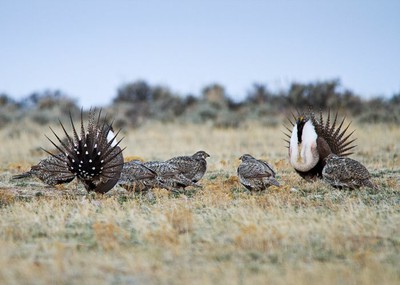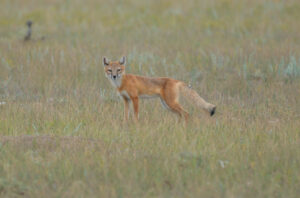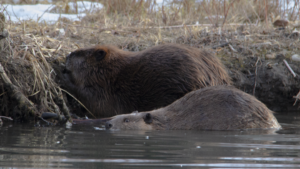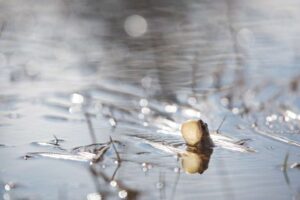Alberta is home to a number of grouse species including the blue grouse, ruffed grouse, sharp-tailed grouse, spruce grouse, and the greater sage grouse. The greater sage grouse is one of the most impressive and most threatened varieties.
As one of the largest grouse species and with males sporting a spiked fanning tail, the greater sage grouse is especially striking. During mating season these birds return to their ancestral “lek” where males perform elaborate dances in which their broad white chests are further accentuated by inflated yellow air sacs. Their odd calls and the timing of their displays at dawn as the sun rises over the expansive prairie sky makes this chicken-like bird all the more impressive.
Unfortunately, as a native to the grasslands of North America, the greater sage grouse is now identified as a species at risk in Alberta. Like plains grizzly bears, the greater sage grouse has been heavily impacted by human activity. As a result of habitat loss, the greater sage grouse is now only seen in a small southeast corner of southern Alberta although measures are in place to help restore the greater sage grouse population and the prairie grasslands.
Should you find an injured or orphaned greater sage grouse, or any other wildlife, contact AIWC for assistance. If you would like to support AIWC’s work consider adopting an animal, volunteering at the centre, or donating to one of our fundraisers.
By Stephanie Ruddock, AIWC Volunteer






